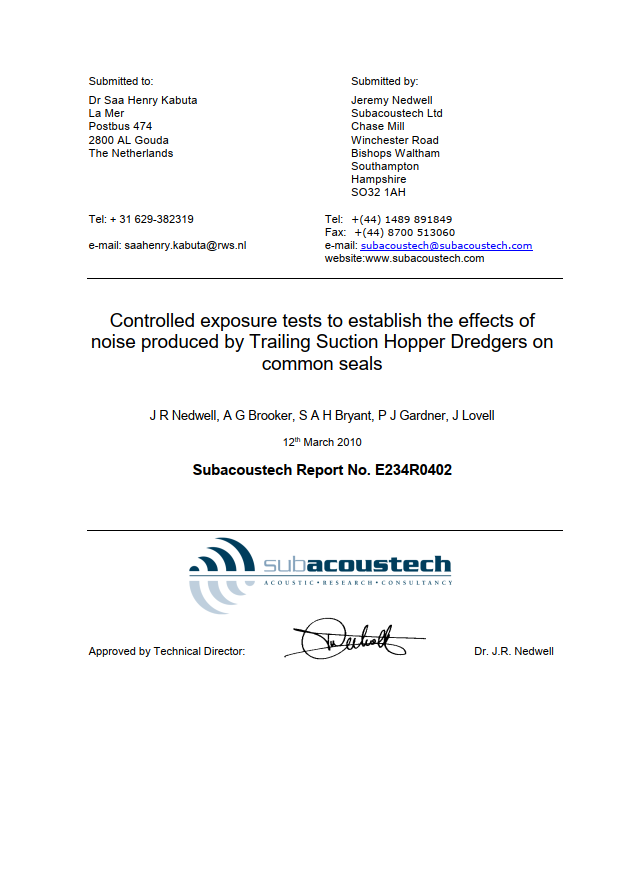Nedwell et al. 2010. Controlled exposure tests to establish the effects of noise produced by Trailing Suction Hopper Dredgers on common seals.
It has been found that the noise produced by Trailing Suction Hopper Dredgers is capable of invoking an avoidance reaction in the common seal with the associated potential ecological impacts. A comparison of a harbour seal audiogram with TSHD noise reveals that this species is likely to be able to hear a range of frequencies between 35 and 40000 Hz with a peak in perception between 200 Hz and 10 kHz. Any measurements taken using sound recording equipment must at least cover this range. However, initial observations on noise levels from TSHD suggest that the distance at which there will be an adverse reaction is a relatively small one. Investigations have revealed that licences are required in order to perform playback experiments on live seals. These licences depend on the country in which the tests are being performed. Modelling has been carried out by Subacoustech to assess the necessary sound field and transducer array design. Initial modelling suggests that it is possible to produce the appropriate sound field and level necessary to recreate the noise of an operational TSHD with an appropriately sized and positioned transducer array. It was found that to achieve conditions similar to exposure to a distant source, a transducer array must be placed at about 40m from the subject. It was also found that an acoustic field characteristic of a TSHD at distance cannot be generated in a confined area such as a water tank. Several types of experiment and experimental conditions are discussed in this report along with costs and feasibility. These are: a pool based procedure involving a transducer deployed in a quiet pool, a net cage in a controlled area in open water with arrays of transducers in place either side of the net, a calibrated feeding station where the seals are deflected from a normal feeding route by a test noise from an array of sound projectors, acoustic location of calling males with a towed array of sound projectors, and tagged seals chased with a towed array of sound projectors. In addition, there are observational techniques presented which may be used to gauge the subjects’ reaction to the noise both in terms of position of the subject and also physiological indicators. Each option has been ranked based on markers such as cost effectiveness and likelihood of achieving satisfactory results.

